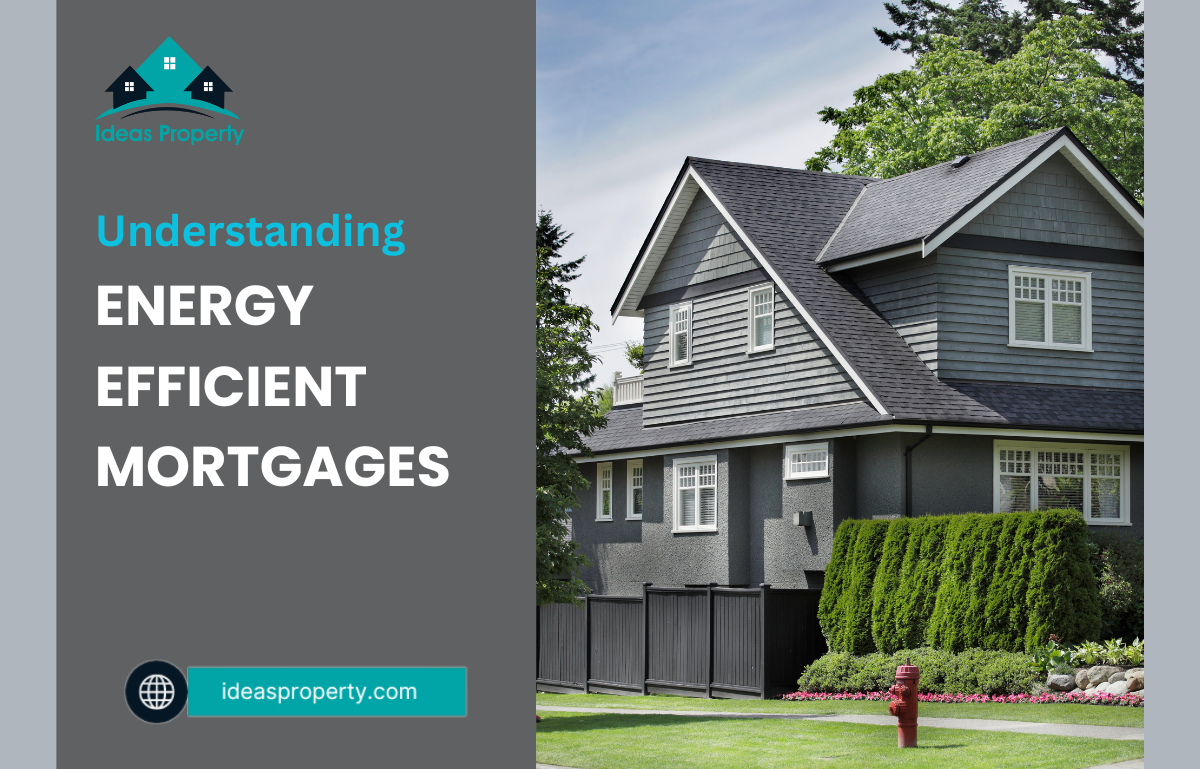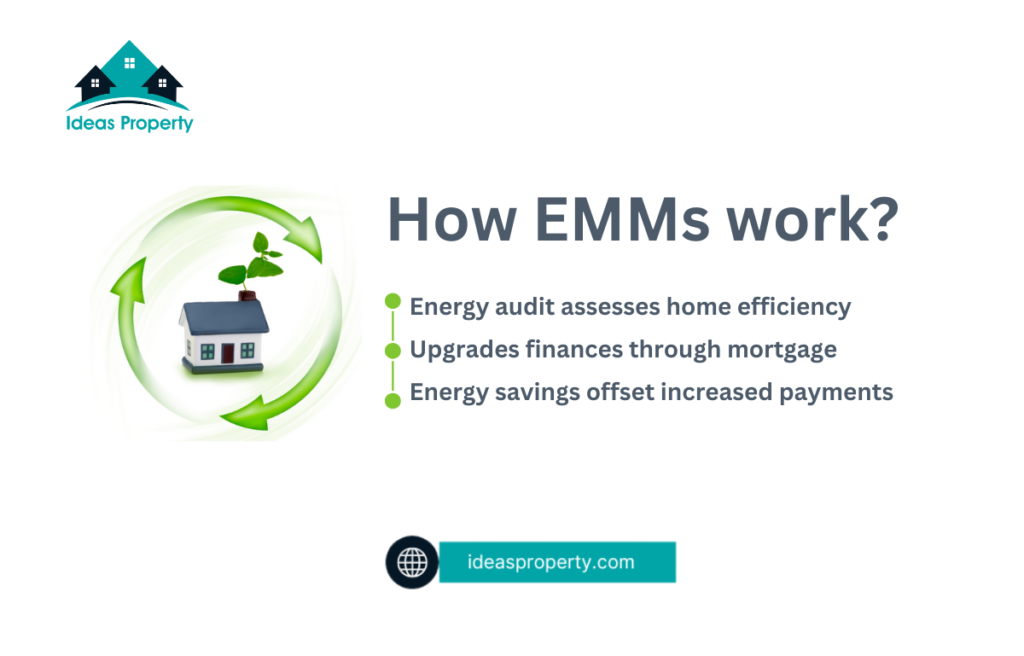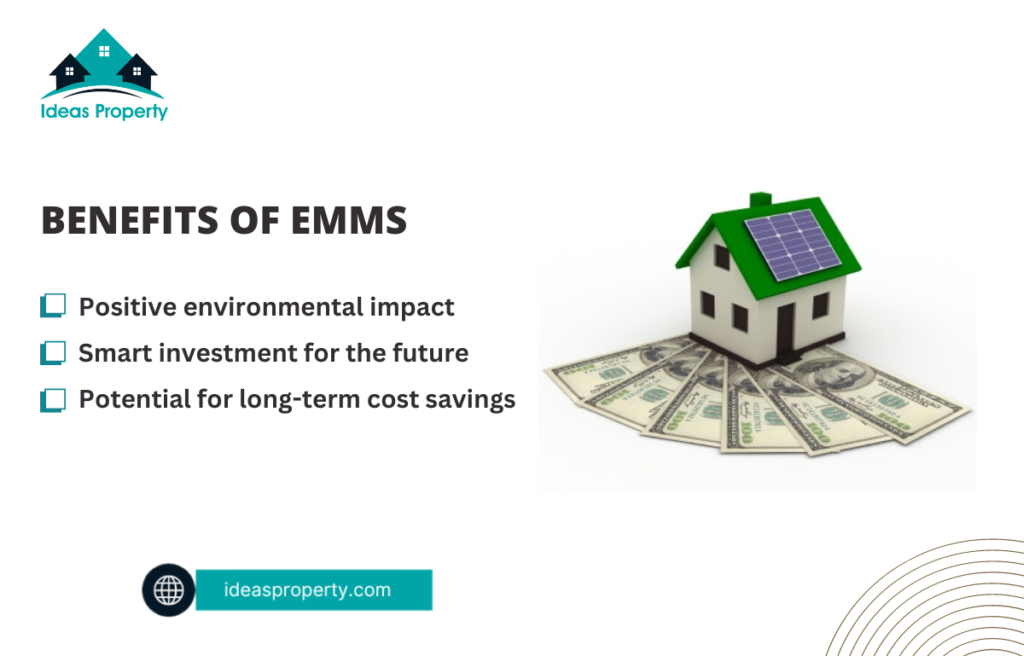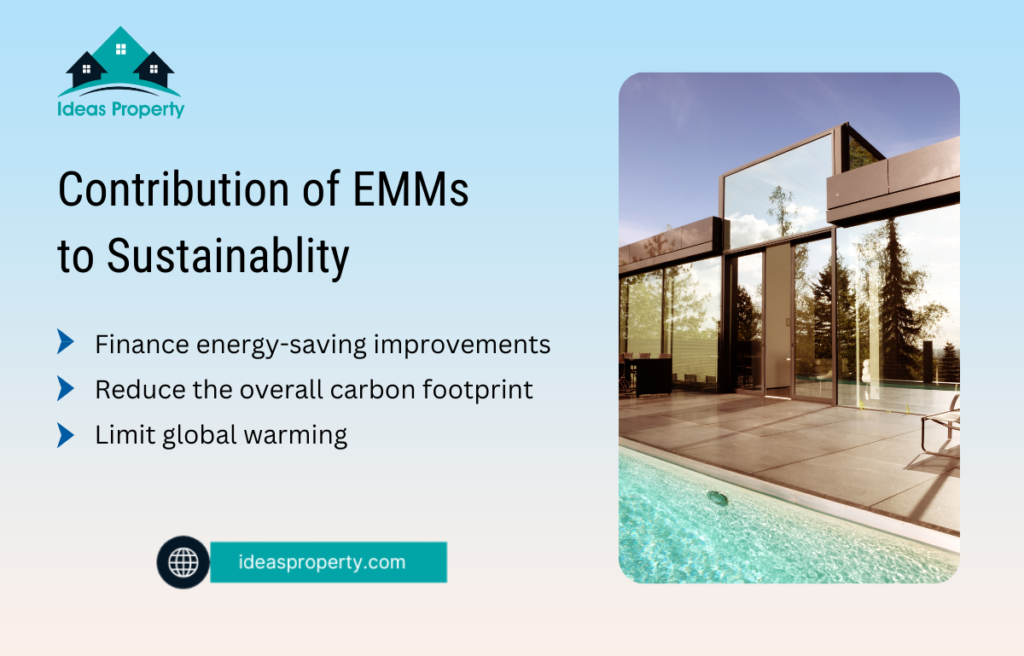Understanding Energy-Efficient Mortgages: Save Money And Go Green

Energy-efficient mortgages (EEMs) are specialized loan products that provide borrowers with the opportunity to finance energy-efficient home improvements or to purchase homes that meet certain energy-efficiency standards. These mortgages are designed to help homeowners reduce their utility costs and increase the overall sustainability of their properties. By integrating energy-efficient solutions into your home, an EEM not only enhances the comfort and value of your property but also contributes to broader environmental goals.
What is an Energy-efficient Mortgage (EEM)?
An Energy-efficient Mortgage (EEM) is a type of loan designed specifically to finance energy-saving improvements or the purchase of energy-efficient homes. Unlike traditional mortgages, EEMs allow homeowners to include the cost of energy-efficient upgrades in their mortgage without requiring a larger down payment. This type of mortgage recognizes that energy-efficient homes have lower utility costs, which can offset the higher loan payments, making them a financially viable option for borrowers.
Energy-efficient mortgagesare available through various programs, including those backed by the Federal Housing Administration (FHA), Veterans Affairs (VA), and conventional lenders. These mortgages are becoming increasingly popular as more homeowners and buyers seek to reduce their carbon footprint and lower their monthly energy expenses. The main goal of an EEM is to help homeowners improve their home’s energy efficiency, which not only benefits the environment but also enhances the home’s long-term value.
In practice, an EEM works by assessing the energy efficiency of a property through a professional energy audit. The audit identifies potential improvements, such as installing solar panels, upgrading insulation, or replacing windows. The cost of these improvements is then added to the mortgage, allowing the homeowner to finance the upgrades over the life of the loan.
How do Energy-efficient Mortgages Work?
Energy-efficient Mortgages (EEMs) work by incorporating the cost of energy-efficient improvements into a mortgage, enabling homeowners to finance upgrades that reduce energy consumption. The process typically begins with an energy audit, which is conducted by a certified professional to assess the current energy efficiency of the home. The audit provides a detailed report on recommended improvements, including estimated costs and projected energy savings.
Once the audit is complete, the homeowner can choose which improvements to make. The cost of these upgrades is then added to the mortgage principal, but because the improvements reduce overall energy costs, the additional loan amount is often offset by lower utility bills. For example, if a homeowner installs a new energy-efficient HVAC system that reduces heating and cooling costs by $150 per month, this savings can help balance the slight increase in the monthly mortgage payment.
Lenders consider the potential energy savings when determining the borrower’s ability to repay the loan. This means that borrowers may qualify for a larger loan amount than they would with a traditional mortgage, as the energy savings are factored into the debt-to-income ratio. This feature makes EEMs a powerful tool for financing significant energy-saving improvements without needing a substantial upfront investment.

How to Qualify for an Energy-efficient Mortgage?
Qualifying for an Energy-efficient Mortgage (EEM) involves meeting specific criteria that vary depending on the type of mortgage program you choose, such as FHA, VA, or conventional loans. Generally, the qualification process for an EEM is similar to that of a traditional mortgage, with additional considerations for the energy-efficient improvements you plan to make.
First, you must meet the standard requirements for the mortgage, including having a good credit score, stable income, and a reasonable debt-to-income ratio. Lenders will assess your financial stability to ensure you can manage the mortgage payments. However, with an EEM, lenders may be more flexible with loan limits because they consider the potential energy savings from the improvements, which can reduce your overall monthly expenses.
In addition to financial qualifications, you’ll need to have a professional energy audit conducted on the property. This audit identifies the energy efficiency of the home and recommends specific upgrades. The audit report is crucial as it helps the lender determine the amount that can be added to the mortgage for the energy improvements. Typically, the cost of the improvements must not exceed a certain percentage of the home’s appraised value, often around 5-15%, depending on the program.
What Types of Homes are Eligible for Energy-efficient Mortgages?
Energy-efficient Mortgages (EEMs) can be used for a variety of property types, but eligibility often depends on the specific mortgage program and the condition of the home. Generally, single-family homes, multi-family residences (up to four units), and some types of manufactured homes can qualify for an EEM, provided they meet the program’s requirements for energy efficiency.
Newly constructed homes are prime candidates for energy-efficient mortgages, especially if they are built to high energy efficiency standards such as those certified by ENERGY STAR or other green building programs. These homes typically require fewer upgrades because they already include energy-efficient features. However, older homes can also qualify for EEMs if they undergo energy-efficient improvements that significantly reduce their energy consumption.
In addition to the type and age of the home, the property must pass an energy audit. The audit ensures that the proposed upgrades will lead to meaningful energy savings. Homes that are in poor condition or require extensive repairs beyond energy efficiency upgrades may not qualify, as the primary focus of an EEM is to improve energy performance, not to cover major structural repairs or other unrelated renovations.
How to Apply for an Energy-efficient Mortgage?
Applying for an Energy-efficient Mortgage (EEM) follows a process similar to that of a traditional mortgage, with a few additional steps to accommodate the energy efficiency aspect. The first step is to choose a lender that offers energy-efficient mortgages, which can be a bank, credit union, or mortgage company. Not all lenders offer EEMs, so it’s essential to find one experienced in handling these specialized loans.
Once you’ve selected a lender, you’ll need to undergo the standard mortgage application process, which includes submitting your financial documents, such as proof of income, credit history, and any other information the lender requires. Alongside this, you must schedule an energy audit of the home. The audit will identify the energy-efficient improvements that can be made and estimate the cost and expected savings from these upgrades.
After the audit, the lender will review the report and determine the amount that can be added to your mortgage to cover the energy-efficient improvements. The final step involves the typical mortgage approval process, where the lender evaluates your overall financial situation and the energy audit findings. Once approved, the funds for the energy improvements are either released at closing or held in an escrow account until the improvements are completed, depending on the lender’s policies.
What are the Benefits of Energy-efficient Mortgages?
Energy-efficient Mortgages (EEMs) offer a range of benefits to homeowners, making them an attractive option for those looking to improve their home’s energy efficiency. One of the most significant advantages is the potential for long-term cost savings. By financing energy-efficient upgrades through an EEM, homeowners can reduce their monthly utility bills, which helps to offset the cost of the mortgage over time. This not only makes homeownership more affordable but also increases the home’s overall value.
Another key benefit of energy-efficient mortgages is the positive environmental impact. By investing in energy-efficient upgrades, homeowners contribute to reducing their carbon footprint and promoting sustainability. These improvements, such as installing solar panels, upgrading insulation, or using energy-efficient appliances, reduce the home’s reliance on non-renewable energy sources, thereby helping to conserve natural resources and reduce greenhouse gas emissions.
Furthermore, homes with energy-efficient features are often more comfortable and healthier to live in. Improved insulation, better windows, and advanced HVAC systems can enhance indoor air quality and maintain consistent indoor temperatures, which contributes to a more pleasant living environment. Additionally, as energy-efficient homes become increasingly desirable in the real estate market, they tend to have higher resale values, making EEMs a smart investment for the future.

How Much Can You Save with an Energy-efficient Mortgage?
The savings associated with an Energy-efficient Mortgage (EEM) can be substantial, both in terms of monthly utility costs and long-term financial benefits. By financing energy-efficient upgrades through an EEM, homeowners can significantly reduce their energy consumption, which directly lowers their utility bills. The exact amount of savings will vary depending on the type and extent of the improvements made, as well as the energy costs in your region.
For example, if you install solar panels, upgrade insulation, or replace old windows with energy-efficient models, you could see your energy bills drop by 20-30% or more. According to the U.S. Department of Energy, homeowners can save up to $500 annually by making energy-efficient improvements, and this savings can be even higher in areas with extreme weather conditions. Over the life of a 30-year mortgage, these savings can add up to thousands of dollars, making an EEM a smart financial choice.
Additionally, the energy savings can offset the slightly higher monthly mortgage payments that result from including the cost of upgrades in the loan. This means that while your mortgage payments may be a bit higher, the overall cost of homeownership remains manageable due to lower utility expenses. In some cases, the savings on energy bills can even exceed the additional mortgage costs, leading to a net positive financial outcome.
How Do Energy-efficient Mortgages Affect Your Home’s Resale Value?
Energy-efficient Mortgages (EEMs) can positively impact your home’s resale value by making it more attractive to potential buyers who are increasingly seeking energy-efficient homes. Properties with energy-efficient features, such as improved insulation, energy-saving appliances, and solar panels, tend to sell faster and at higher prices compared to homes without such upgrades. This is because buyers recognize the long-term cost savings associated with reduced energy consumption, making these homes more desirable in the real estate market.
According to studies, homes with energy-efficient certifications or improvements can command a premium price. For instance, a study by the National Association of Home Builders found that buyers are willing to pay more for homes with energy-efficient features, sometimes as much as 3-5% above the market value. Additionally, homes with lower utility bills due to energy-efficient upgrades are often more appealing to buyers, especially in areas where energy costs are high.
Moreover, the presence of an EEM can signal to potential buyers that the home has been well-maintained and upgraded with long-term sustainability in mind. This perception of quality and forward-thinking investment can further enhance the home’s marketability and resale value, ensuring that the homeowner recoups the cost of the energy-efficient improvements, and possibly more, when selling the property.
What are the Best Strategies for Maximizing Savings with an Energy-efficient Mortgage?
Maximizing savings with an Energy-efficient Mortgage (EEM) requires strategic planning and a focus on the most impactful energy-efficient improvements. One of the best strategies is to prioritize upgrades that offer the highest return on investment (ROI) in terms of energy savings. For example, enhancing insulation, installing high-efficiency HVAC systems, and upgrading windows are all improvements that can lead to substantial reductions in heating and cooling costs, which are typically the largest energy expenses in a home.
Another effective strategy is to take advantage of available incentives and rebates. Many state and local governments, as well as utility companies, offer financial incentives for making energy-efficient improvements. These can include tax credits, rebates, and even low-interest loans that can further reduce the overall cost of upgrades. By combining these incentives with the financing from an EEM, homeowners can significantly lower their upfront costs and maximize their long-term savings.
It’s also important to conduct a thorough energy audit before deciding on which improvements to make. An energy audit will identify the areas where your home is losing the most energy and recommend the most effective upgrades. By targeting these areas, you can ensure that your investments in energy efficiency will yield the greatest savings over time, both in reduced utility bills and in the enhanced value of your home.
What Incentives are Available for Energy-efficient Mortgages?
Homeowners who opt for an Energy-efficient Mortgage (EEM) can take advantage of several incentives designed to encourage energy efficiency. These incentives can come from federal, state, or local governments, as well as utility companies, and they often make the financial benefits of energy-efficient mortgages even more compelling.
At the federal level, homeowners may qualify for tax credits for certain energy-efficient upgrades, such as installing solar panels or energy-efficient windows. These credits can reduce the overall cost of improvements, making an EEM even more attractive. Additionally, some states offer rebates or grants for energy-efficient home upgrades, which can be combined with the financing from an EEM to further lower the out-of-pocket expenses.
Utility companies often provide rebates or incentives for customers who make energy-efficient improvements. These can include discounts on energy-efficient appliances, rebates for upgrading insulation, or even lower rates for homes that meet certain energy efficiency standards. By taking advantage of these incentives, homeowners can maximize the financial benefits of their EEM and make their homes more environmentally friendly at a reduced cost.
What are the Differences Between Energy-efficient Mortgages and Traditional Mortgages?
Energy-efficient Mortgages (EEMs) differ from traditional mortgages primarily in their focus on financing energy-saving improvements. While a traditional mortgage is typically used to purchase a home or refinance an existing mortgage without any additional enhancements, an EEM specifically includes funding for upgrades that improve the home’s energy efficiency. This key difference allows homeowners to make their homes more sustainable and reduce long-term energy costs without needing to secure separate financing.
Another significant difference is how lenders assess a borrower’s ability to repay the loan. With energy-efficient mortgages, lenders consider the potential savings from the energy-efficient improvements when calculating the borrower’s debt-to-income ratio. This means that borrowers might qualify for a larger loan amount compared to a traditional mortgage because the expected reduction in utility bills is factored into the affordability equation.
Moreover, the approval process for an EEM requires an energy audit, which is not a standard requirement for traditional mortgages. This audit ensures that the proposed improvements will lead to meaningful energy savings, justifying the additional cost added to the mortgage. The structure of an EEM thus supports sustainable living by incentivizing energy efficiency, a feature not typically emphasized in traditional mortgages.
How Do Energy-efficient Mortgages Contribute to Sustainability Goals?
Energy-efficient Mortgages (EEMs) play a crucial role in advancing sustainability goals by promoting the adoption of energy-efficient technologies and reducing the environmental impact of residential properties. By financing energy-saving improvements, EEMs encourage homeowners to invest in upgrades that decrease energy consumption, thereby lowering greenhouse gas emissions and reliance on non-renewable energy sources.
Homes that are more energy-efficient require less energy to heat, cool, and power, which directly contributes to reducing the overall carbon footprint of residential properties. This aligns with broader sustainability objectives, such as those outlined in international agreements like the Paris Agreement, which aim to limit global warming by reducing carbon emissions. By making it easier for homeowners to invest in energy efficiency, energy-efficient mortgages support these global efforts by helping to decrease energy demand at the household level.
Furthermore, energy-efficient mortgagescontribute to the creation of a more sustainable housing market. As more homes are upgraded to meet higher energy efficiency standards, the demand for energy-efficient technologies increases, driving innovation and reducing costs for future projects. This creates a positive feedback loop where sustainability becomes more accessible and affordable, accelerating the transition to a more energy-efficient and environmentally friendly built environment.

What is the Future of Energy-efficient Mortgages?
The future of Energy-efficient Mortgages (EEMs) looks promising as the demand for sustainable and energy-efficient housing continues to grow. With increasing awareness of climate change and the financial benefits of energy efficiency, more homeowners and buyers are likely to seek out EEMs as a way to reduce their environmental impact and save on utility costs. Additionally, as governments and financial institutions continue to emphasize the importance of sustainability, we can expect more incentives and programs to support the adoption of EEMs.
Technological advancements are also likely to play a significant role in the future of EEMs. As energy-efficient technologies become more sophisticated and affordable, the range of eligible upgrades for EEMs will expand. This could include the integration of smart home systems, renewable energy sources like solar and wind, and even advanced insulation materials that further reduce energy consumption. As these technologies become more widespread, energy-efficient mortgages will likely evolve to cover a broader array of improvements, making them an even more attractive option for homeowners.
Moreover, the push towards net-zero energy buildings, which produce as much energy as they consume, could become a driving force for the expansion of energy-efficient mortgages. As regulations and building codes increasingly favor energy-efficient construction, EEMs will be a critical tool in financing the upgrades needed to meet these new standards. This evolution will position EEMs not just as a niche financial product but as a mainstream option for financing sustainable homeownership in the years to come.
Energy-efficient Mortgages (EEMs) represent a powerful financial tool for homeowners looking to enhance the sustainability and energy efficiency of their properties. By allowing the cost of energy-saving upgrades to be included in the mortgage, EEMs make it easier for homeowners to invest in improvements that reduce energy consumption, lower utility bills, and increase home value. As the demand for sustainable living continues to grow, EEMs will play an increasingly important role in helping individuals and families achieve both financial savings and environmental stewardship.
The future of energy-efficient mortgagesis bright, with expanding opportunities driven by advancements in energy-efficient technologies and a growing emphasis on sustainability in the housing market. Whether it’s through installing high-efficiency HVAC systems, upgrading insulation, or incorporating solar panels for homes, energy-efficient mortgages provide a practical and effective way to finance the transition to greener living. As awareness of the benefits of energy efficiency continues to rise, energy-efficient mortgages are poised to become a mainstream option for financing homeownership in a way that aligns with global sustainability goals.
